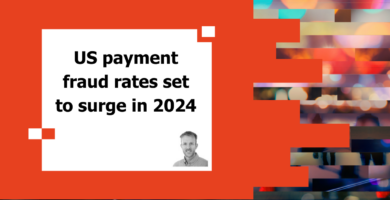Almost two years ago (amidst a record-breaking heatwave), I wrote an article that covered the basics of Central Bank Digital Currency (CBDC). We looked at what CBDCs are, who might look to create one, the CBDC landscape, and the benefits of CBDCs for fraud and financial crime prevention.
A lot of time has since passed, and in a bid to lure back a sliver of sunshine, I wanted to revisit the current landscape and the potential benefits of CBDCs — and explore whether these benefits are intrinsically linked to CBDCs or indeed achievable with existing currencies and payment systems.
What does the current CBDC landscape look like?
The high-level concept of CBDCs is that they function and align in similar ways to typical fiat currencies whilst also adding some of the benefits of digital or cryptographic currency.
Despite advancements in design, discussions, and pilot programs of CBDCs over the past two years, only four currencies in Zimbabwe, Nigeria, The Bahamas, and Jamaica have been officially launched (as reported by cbdctracker.org). An additional twenty are cited to be in pilot phases, including major economies like China, India, and France.
Launching a new digital currency is a significant undertaking, particularly when tying it to a central currency, as it introduces considerable risks and concerns about unforeseen consequences. Therefore, a slow and controlled approach is not just expected but necessary.
What are the potential benefits of CBDCs in fraud prevention?
Central Bank Digital Currencies offer a broad range of benefits, one of which is the ability to encode features or functions into them, an area where fraud and financial crime experts see substantial promise.
An idea proposed for CBDC functionality involves releasing funds from payments only after specific criteria are fulfilled. This could provide a safeguard for individuals who may fall victim to scams, allowing them time for additional checks or reflection before releasing the payment.
At first glance, this is an interesting idea. But a more careful assessment quickly reveals that this wouldn’t deliver the significant changes expected. For example, fraud victims are already encouraged to conduct checks and exercise caution before making payments, yet they are often swayed and hurried through this process by scammers.
Even if checks were integrated into digital currency transfers, scammers could still manipulate victims to make payments and swiftly access the funds. Whether those checks were included before or after payment, it seems likely that they would have a limited impact on how effective they would be.
How good are the existing checks and balances against fraud?
The industry has explored various options to slow down payments and enhance authentication, yet no simple and effective solution has been introduced thus far. Payment Service Providers (PSPs) already employ verification like Confirmation of Payee (CoP) and payment categorization.
This begs the following questions:
- Could additional scrutiny be added?
- Or should payments be delayed giving victims more time for reflection?
- Currently, when a fraud system intervenes and initiates customer contact, is the process the same?
Proposed changes by the UK Government on March 12, 2024, would grant PSPs more flexibility to delay payments in cases of suspected fraud, allowing for investigations and decision-making within four working days. However, the underlying challenges remain. What criteria will PSPs use during this delay, and how much responsibility will fall on the payer? PSPs will need to gather insights from the payment beyond Confirmation of Payee and payment reasons to verify the legitimacy of payees and transactions.
Introducing delays for investigations is expected to further strain UK PSP resources, especially as they are already in the process of implementing new procedures to facilitate liability splitting in claims. What’s needed is a solution that incorporates built-in checks and validation, with the capability to reverse transactions if fraud occurs despite these measures.
How could CBDCs address these challenges?
In theory, a digital currency could include the function to capture and verify details, preventing Confirmation of Payee type service overrides. For example, payments designated for business invoices must be directed to business accounts. Digital IDs could also play a role, allowing businesses and their accounts to be verified through various methods by different providers, ensuring transparency and trustworthiness. However, this approach must be carefully balanced with privacy and competition laws to ensure it can work in practice.
The sophistication and complexity of solutions could rapidly escalate along a path of specification and restriction. For example, ongoing currency use might be restricted based on the reason it was received, akin to how funds on certain prepaid cards are restricted to specific retailers.
However, there are drawbacks to this approach. It could lead to a proliferation of multiple layers and views of funds and their usage, potentially leading to complex accounting systems where everything is meticulously allocated. Moreover, funds could become trapped when edge cases, that are not accounted for in the code, arise.
Finally, there’s the risk that mules could become even more nimble at circumventing the system by sending payments to “trusted” beneficiaries who then redirect the funds.
Can digital currencies help solve recall and reversal challenges?
Potentially the most comprehensive result would be the ability to recall or reverse transactions if fraud was confirmed. While existing payment systems have recalls and returns built in, these are usually limited to payments that have not cleared or cases where funds are still available in the receiving account.
Since blockchains are immutable, digital currencies don’t directly offer the ability to reverse or recall transactions; they can, however, record the sequence and source of transactions. By coding additional functionalities into them, transactions could potentially be reversed, and funds could be returned to victims, even after they’ve been sent. Processes could also be implemented to help freeze funds and provide evidence of entitlement to those funds.
The efficacy of CBDCs hinges on a delicate balance between privacy and control
The main challenges overall for Central Bank Digital Currency link to control and privacy access that the central bank and governments may have. Preventing and minimizing fraud and financial crime are key elements of what could be achieved with CBDC and through agreement of what the acceptable levels of control and privacy would be. Innovative solutions, such as Privacy Enhancing Technology will enable challenges to be overcome and enable CBDC to provide exciting opportunities to improve how currency is used and to prevent fraud.
Share





